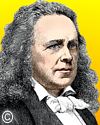
On 9 July 1819, Elias Howe was born. He was the son of a farmer, but his persistence and inventiveness led to significant progress in the early design of an important machine. Sadly, as with many inventions of his era, he had to spent much effort and money protecting his patents. You can read more — about how he developed his ideas into a commercial product, and how it eventually changed his life — in this Biography of Elias Howe, a chapter from Great Fortunes and How They Were Made (1871). You'll be answering a question about exactly what was his invention in the quiz below. He became famous enough that his life was commemorated with the issue of a 5¢ postage stamp in 1940.

On 9 Jul 1933, Oliver Sacks was born. He wrote several best-selling books, but your webmaster has a favorite. Today's book pick is: Uncle Tungsten: Memories of a Chemical Boyhood, by Oliver Sacks. Long before he became a distinguished neurologist and bestselling writer, he was a small English boy, growing up in a household of polymaths who fostered in his science. He became fascinated by metals and chemical reactions (the louder and smellier the better), photography, squids and cuttlefish, H.G. Wells, and the periodic table. In this endlessly charming and eloquent memoir, the author of The Man Who Mistook His Wife for a Hat and Awakenings, chronicles his love affair with science and the magnificently odd and sometimes harrowing childhood in which that love affair unfolded.
It is available from Amazon, typically about New from $6.98. Used from $1.22. (As of earlier time of writing - subject to change.)
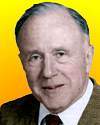 | To Wheeler's comment, If you haven't found something strange during the day, it hasn't been much of a day, a student responded, I can't believe that space is that crummy. Wheeler replied: To disagree leads to study, to study leads to understanding, to understand is to appreciate, to appreciate is to love. So maybe I'll end up loving your theory. |
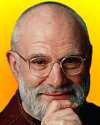 | Nature gropes and blunders and performs the crudest acts. There is no steady advance upward. There is no design. |
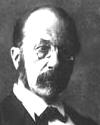 | Heredity is the general expression of the periodicity of organic life. All generations belong to a continuous succession of waves, in which every single one resembles its predecessors and its followers. |
| Before you look at today's web page, see if you can answer some of these questions about the events that happened on this day. Some of the names are very familiar. Others will likely stump you. Tickle your curiosity with these questions, then check your answers on today's web page. | |
| Births | |
 | Elias Howe, an American inventor, was born 9 Jul 1819. Although he wasn’t the first to create a particular type of machine, he was the first in the U.S. to pursue it and was granted a patent on his own machine on 10 Sep 1846. Commercial success came slowly, requiring the defense of his patent against the better marketed machine of another more well-known person in the same industry. Eventually Howe gained riches, but died young at 49. By then, his machines helped revolutionize the factory and in the home. What was Howe's invention? |
 | On 9 Jul 1938, James Pollack was born, an American NASA astrophysicist, who helped develop a theory of the climatic effects after atomic war. He was a world-renowned expert in the study of planetary atmospheres. He resolved the paradox that Saturn’s rings show low microwave emissivity but high radar reflectivity and discovered the first real evidence of sulphuric acid in the clouds of Venus. This theory’s predicted climatic result of atomic war was known by what name? |
| Deaths | |
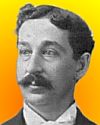 | The inventor and manufacturer of the safety razor (1855-1932) began in 1895 by producing a crude version of a disposable razor blade. A utopian, he wrote four books translating his business experience into social theories, culminating with The People's Corporation (1924). Can you name this inventor? |
| Events | |
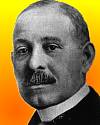 | On 9 Jul of a certain year, Dr. Daniel Hale Williams, at Provident Hospital in Chicago, performed the world’s first successful open heart surgery without using anesthesia. He removed a knife from the heart of a bar-fight stabbing victim. He sutured a wound to the pericardium (the fluid sac surrounding the myocardium) The patient recovered and lived for several years afterward. Dr. Williams was the only African-American in a group of 100 charter members of the American College of Surgeons in 1913 What was the decade in which this open-heart surgey took place? |
 | On 9 Jul 1957 an announcement was made of the discovery of an artificial element, and its name was proposed, for an isotope believed found with a half-life of 10 minutes at 8.5 MeV. Later tests showed that no isotopes of the element with that atomic number had such a half-life. The element was truly discovered in Apr 1958. However, IUPAC accepted the name given to the prematurely discovered element. What is the name of this element? |
Fast answers for the previous newsletter for July 8: Count Ferdinand von Zeppelin • Atlanta, Georgia • leadership to build the atomic-powered submarine, USS Nautilus • Christiaan Huygens • the decade including the year 1800.
 If you enjoy this newsletter, the website, or wish to offer encouragement or ideas, please send feedback by using your mail reader Reply button.
If you enjoy this newsletter, the website, or wish to offer encouragement or ideas, please send feedback by using your mail reader Reply button. Your click on a Facebook, StumbleUpon, or other social button on the site webpages is also a welcome sign of appreciation. Thank you for using them.
© This newsletter is copyright 2020 by todayinsci.com. Please respect the Webmaster's wishes and do not put copies online of the Newsletter — or any Today in Science History webpage. (If you already have done so, please remove them. Thank you.) Offline use in education is encouraged such as a printout on a bulletin board, or projected for classroom viewing. Online, descriptive links to our pages are welcomed, as these will provide a reader with the most recent revisions, additions and/or corrections of a webpage. For any other copyright questions, please contact the Webmaster by using your mail reader Reply button.
--
If you do not want to receive any more newsletters, Unsubscribe
To update your preferences and to unsubscribe visit this link
Executive Real Estate Business Class
-
"It was like a man with wings. It wasn't like anything you'd see on TV or in a monster movie." ...
About the publisher
Search This Blog
Blog Archive
-
▼
2021
(585)
-
▼
July
(50)
- Newsletter for Saturday 31 July.
- Newsletter for Friday 30 July.
- Power off and play this summer!
- Newsletter for Thursday 29 July.
- Newsletter for Wednesday 28 July.
- Newsletter for Tuesday 27 July.
- Newsletter for Monday 26 July.
- Newsletter for Sunday 25 July.
- Newsletter for Saturday 24 July.
- Newsletter for Friday 23 July.
- Newsletter for Thursday 22 July.
- Newsletter for Wednesday 21 July.
- Newsletter for Tuesday 20 July.
- Newsletter for Monday 19 July.
- The Machines That Built America Premieres Tonight
- Newsletter for Sunday 18 July.
- Newsletter for Saturday 17 July.
- Newsletter for Friday 16 July.
- Newsletter for Thursday 15 July.
- Newsletter for Wednesday 14 July.
- Newsletter for Tuesday 13 July.
- On This Day for July 12 - Geraldine Ferraro design...
- Newsletter for Monday 12 July.
- Inventing ‘The Machines That Built America’
- On This Day for July 11 - Duel between Aaron Burr ...
- Newsletter for Sunday 11 July.
- On This Day for July 10 - Telstar 1 launched, John...
- Newsletter for Saturday 10 July.
- On This Day for July 9 - Catherine the Great assum...
- Newsletter for Friday 9 July.
- New Season! Hope, Through History Podcast
- On This Day for July 8 - Vasco da Gama's first voy...
- Newsletter for Thursday 8 July.
- Ending soon: savings that pop! 🎆
- On This Day for July 7 - Hawaiian Islands annexed ...
- Newsletter for Wednesday 7 July.
- On This Day for July 6 - Anne Frank forced into hi...
- Newsletter for Tuesday 6 July.
- On This Day for July 5 - Israel's Law of Return pa...
- Newsletter for Monday 5 July.
- On This Day for July 4 - Declaration of Independen...
- Newsletter for Sunday 4 July.
- July 4th Sale at the HISTORY Store!
- On This Day for July 3 - Battle of Gettysburg ende...
- Newsletter for Saturday 3 July.
- On This Day for July 2 - Civil Rights Act signed, ...
- Newsletter for Friday 2 July.
- July 4th savings that pop!
- On This Day for July 1 - Dominion of Canada establ...
- Newsletter for Thursday 1 July.
-
▼
July
(50)
-
Blogroll
-
About
HistoryFact










0 comments:
Post a Comment